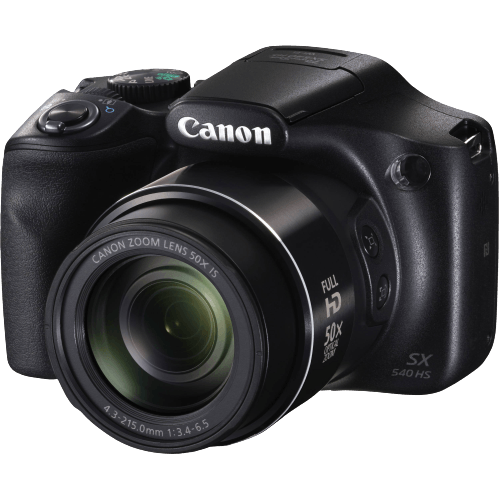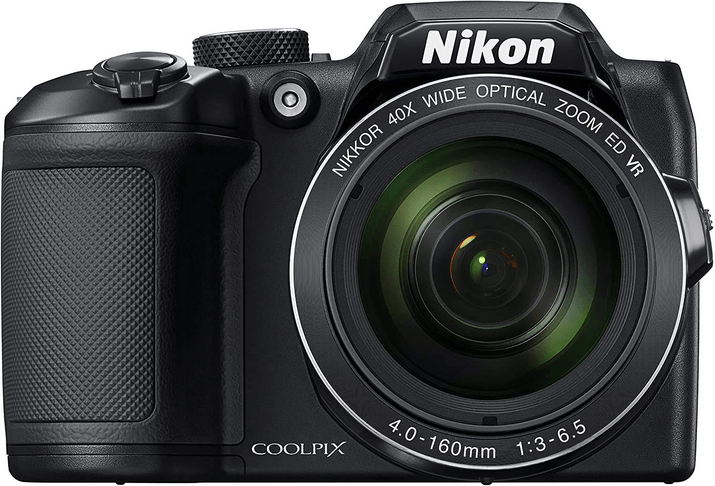Canon PowerShot SX540 HS vs Nikon Coolpix B500 Comparison
Canon PowerShot SX540 HS

Nikon Coolpix B500

The Nikon Coolpix B500 narrowly edges out the Canon PowerShot SX540 HS with a score of 53/100 compared to Canon’s 52/100. Both cameras are bridge type and were released in 2016. They share similar dimensions, with the Canon measuring 120 x 82 x 92mm and weighing 442g, while the Nikon measures 114 x 78 x 95mm and weighs 541g.
The Canon PowerShot SX540 HS has the advantage of being lighter, making it easier to carry around for extended periods. However, the Nikon Coolpix B500 outperforms the Canon in terms of overall score, suggesting that it may offer better features or image quality.
Despite the Canon’s higher price, the Nikon Coolpix B500 proves to be a better option due to its higher score. Both cameras have their own strengths, but the Nikon ultimately comes out on top in this comparison.
Canon PowerShot SX540 HS vs Nikon Coolpix B500 Overview and Optics
The Nikon Coolpix B500 narrowly wins in the optics category with a score of 53/100, compared to the Canon PowerShot SX540 HS’s score of 51/100. Both cameras share some common specifications, such as the 1/2.3″ CMOS sensor, fixed lens mount, and image stabilization. However, there are differences that set these cameras apart.
The Canon PowerShot SX540 HS has a higher megapixel count at 20, compared to the Nikon Coolpix B500’s 16 megapixels. This advantage allows the Canon camera to capture more detail in images. Additionally, the Canon boasts a DIGIC 6 processor, which contributes to better image quality and processing speed. However, its DXOMARK sensor score is lower at 47, compared to the Nikon’s 72.
On the other hand, the Nikon Coolpix B500 has a faster shooting speed of 7 frames per second, compared to the Canon’s 5.9. This makes the Nikon camera more suitable for capturing fast-moving subjects. The B500’s higher DXOMARK sensor score of 72 also suggests better overall image quality in various lighting conditions.
In terms of optics, the Nikon Coolpix B500 takes a slight lead over the Canon PowerShot SX540 HS. The Canon excels in its higher megapixel count and advanced processor, while the Nikon outperforms with its faster shooting speed and better DXOMARK sensor score. Ultimately, potential buyers should consider their specific photography needs and preferences when choosing between these two cameras.
Canon PowerShot SX540 HS vs Nikon Coolpix B500 Video Performance
The Nikon Coolpix B500 outperforms the Canon PowerShot SX540 HS in video capabilities, as reflected in their scores of 70/100 and 56/100, respectively. Both cameras share some specifications, including Full HD video resolution and maximum video dimensions of 1920 x 1080. Additionally, they both support a maximum video frame rate of 60fps.
The Nikon Coolpix B500 surpasses the Canon PowerShot SX540 HS with its built-in time-lapse functionality. This feature allows users to create stunning time-lapse videos without the need for additional software or post-processing, making the B500 a more versatile and user-friendly option for capturing video.
While the Canon PowerShot SX540 HS lags behind in terms of time-lapse functionality, it is still a capable camera for recording Full HD video. The 60fps frame rate ensures smooth motion in captured videos, and the 1920 x 1080 resolution delivers clear and detailed visuals. However, the lack of built-in time-lapse functionality is a drawback for users interested in exploring this creative technique.
Taking these factors into account, the Nikon Coolpix B500 emerges as the superior choice for video capabilities due to its added time-lapse functionality. The Canon PowerShot SX540 HS, while still a viable option for Full HD video recording, falls short in offering the same level of versatility and creative possibilities.
Canon PowerShot SX540 HS vs Nikon Coolpix B500 Features and Benefits
The Canon PowerShot SX540 HS wins the features comparison with a score of 64/100, while the Nikon Coolpix B500 scores 54/100. PowerShot SX540 HS and the Nikon Coolpix B500 cameras share some common specifications, such as a 3-inch screen size, absence of GPS, and the presence of WIFI and Bluetooth connectivity.
The Nikon Coolpix B500 has a higher screen resolution, with 921,000 dots compared to the Canon’s 461,000 dots. This results in a sharper and clearer display, which can improve image review and composition.
Canon PowerShot SX540 HS vs Nikon Coolpix B500 Storage and Battery
The Nikon Coolpix B500 outperforms the Canon PowerShot SX540 HS in storage and battery with a score of 43/100 compared to 13/100. Both cameras have a single memory card slot and accept SD, SDHC, and SDXC memory cards. The Nikon B500 excels in battery life, providing 600 shots, while the Canon SX540 HS only offers 205 shots. The Nikon B500 also has the advantage of USB charging, which the Canon SX540 HS lacks.
On the other hand, the Canon SX540 HS uses a specific battery type, NB-6LH, which may be more convenient for some users who prefer proprietary batteries. However, the Nikon B500 uses 4 AA batteries, making it easier to find replacements when needed.
Considering these factors, the Nikon Coolpix B500 is the superior choice for storage and battery capabilities, while the Canon PowerShot SX540 HS may appeal to those who prefer a specific battery type.
Canon PowerShot SX540 HS vs Nikon Coolpix B500 Alternatives
Still not sure which camera is best for you? Check out some more popular camera comparisons for inspiration:
